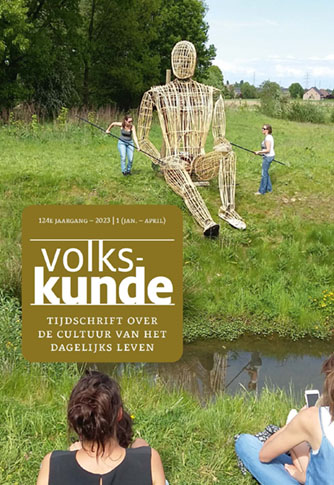“Goodbye then, French riffraff”.
Protest songs against French rule in
Antwerp (1793-1814)
Brecht Deseure
Singing songs is an age-old way of voicing political protest, which was widely practised in the revolutionary era. This article presents the first systematic investigation of political songs in the former Austrian Netherlands under French rule. The analysis centres on a corpus of ten anti-French songs from the city of Antwerp. All songs, dating from 1792 to 1814, voice complaints about Republican and Napoleonic rule.
As such, they constitute important evidence of public opinion at the time, for which few other sources are available. In line with recent international historiography, songs are considered here as tools to create community feelings within specific groups. The analysis shows that several rhetorical and musical techniques suggested and enhanced group identities. These techniques include the integration of shared moral values, relatable (fictional) protagonists and elements from local urban identity, as well as the satirical use of republican melodies. As to the content, the songs voiced complaints that were typical of the conservative, anti-republican opposition against French rule.
Prominent among these complaints were the financial plunder of the Netherlands by the French government, economic and monetary distress, anticlerical policy and the introduction of fake liberty.
From play to serious: 300 years Canon of the Netherlands
Hans Piena
In 2006, the Dutch government started the Canon of the Netherlands, which tells the history of The Netherlands in 50 subjects. They are presented as icons on a timeline within the framework of 10 eras, which form the backbone of history education in The Netherlands. There are booklets on each subject for further explanation.
At the time, this was presented as something revolutionary. However, the author discovered that very similar educational aids existed in the early 18th century and have been in use ever since. 22 Examples with a total of 412 different subjects were analysed for this purpose. What were the most important subjects during the past 300 years, and how have their perspectives evolved over time? Who was the target audience?
What was the goal? It was discovered during the research that the purpose largely determined what was told and especially what wasn’t. The Canon of the Nederland, for which the Dutch government provided suggestions, is a tool for inclusion and social cohesion.
Although this may be laudable, it also leads to a great deal of one-sidedness in the presentation of history. It developed into a political tool around 1800, which it still is today.
The Celtic giant Contios. From genesis to second lustre
Bruno Stappaerts
The cultural society REUZENplan built a new giant with two schools in their hometown of Kontich. A giant figure
from Brussels (Zinneke Parade) and Saint Herblain (L’Homme Debout) inspired the principle of the shape.
The primary focus of this project was not only the physical appearance of the giant, but also the social impact resulting from its existence.
The result was a 6-metre-high, multifaceted figure with a distinctive voice and the ability to perform.
It takes nine people to handle the different positions in a story. The outside structure is made up of twigs mounted on an iron frame, including a cart and the balance of the upright and moving giants.
According to a newly released booklet on toponymy, Alfred Michiels wrote that the name Kontich is derived from an ancient Celtic figure. Thus, he became a Celtic giant named Contios. The giant has been the main participant in at least six different feature stories, each time in a different location, since his birth.
Sometimes in the afternoon, but later also in evening performances.
Inspired by the German Dundu giants, he was given internal lights. He travels from neighbourhood to neighbourhood and puts on shows in cooperation with local societies, schools and artists. He has begun to engage in extraterritorial
performances in order to generate income and organize free events in his hometown. Moreover, the last activity involved a group of Ukrainian refugees. REUZENplan strives to foster a sense of community and inclusion, thereby fostering a generous and inclusive spirit.


